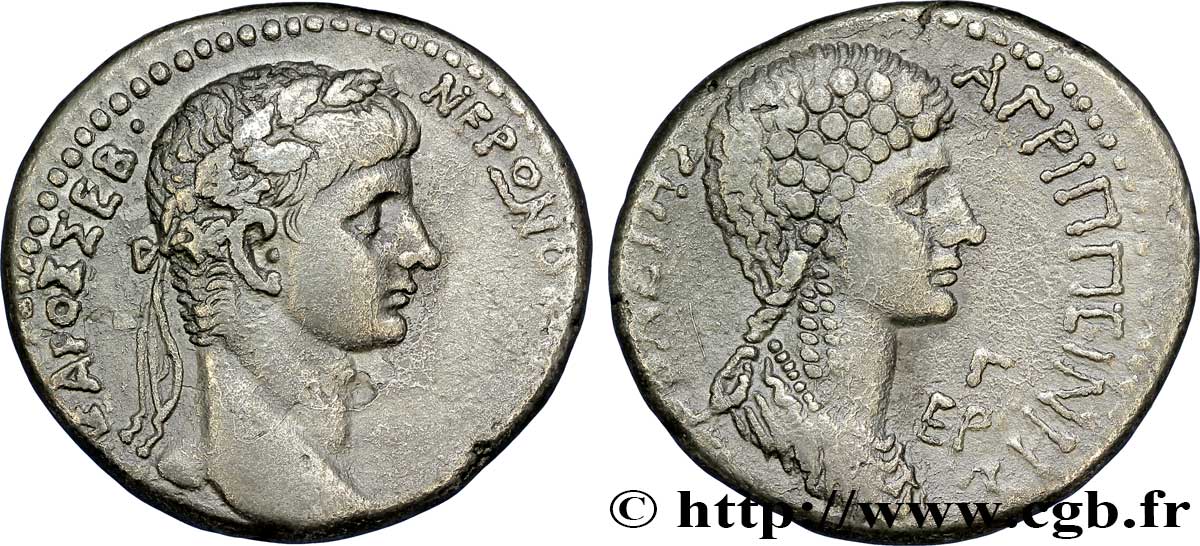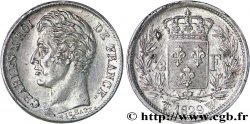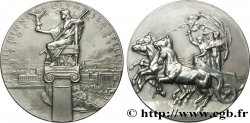bpv_296885 - NERO and AGRIPINA Tétradrachme syro-phénicien
无库存.
所有在网站上销售的产品 (2014)
价格 : 1 400.00 €
所有在网站上销售的产品 (2014)
价格 : 1 400.00 €
种类 Tétradrachme syro-phénicien
日期: 56-57
铸币厂名称/城市 Antioche, Syrie, Séleucie et Piérie
材质 silver
直径 26 mm
模子方针 12 h.
重量 13,91 g.
稀少度 R1
关于品相的说明
Flan étroit, comme très souvent dans ces émissions
出版目录中的项代码 :
家谱
Cet exemplaire est le 0074_059 et il provient de la Collection Richard McAlee
正面
正面的说明书 Tête laurée de Néron jeune à droite (O*).
正面铭文 NERWNOS KLAUDIOU QEOU UI KAISAROS SEB
正面的翻译 (Néron césar auguste fils du divin Claude).
背面
背面的说明书 Buste drapé et natté d’Agrippine à droite.
背面铭文 AGRIPPEINHS SEBASTHS G ET
背面的翻译 (Agrippine auguste - troisième année de règne - An 105 de l’ère césarienne).
评论
Cette émission dynastique inaugurale du règne comprend, outre notre exemplaire à la gloire d’Agrippine et du nouvel empereur, un tétradrachme au revers de Claude, diverses divisionnaires et le premier tétradrachme d’Antioche au revers à l’aigle, type qui deviendra le standard jusqu’à la fin des émissions, sous Trébonien Galle et Uranius Antoninus. Toutes les monnaies de cette série sont très rares à rarissimes et ont certainement été motivées par des donativa et non par les nécessités de la circulation monétaire.
Dans la base TSP maintenue par Michel Prieur, quatre-vingt exemplaires sont maintenant répertoriés ; comme pour le tétradrachme de Cléopâtre et Marc-Antoine, aussi rare, ce type est sur-représenté du fait de la présence du portrait d’Agrippine qui a incité les professionnels à passer la monnaie en vente et à l’illustrer. Parmi ces quatre-vingt exemplaires, on en trouve dix en musées ou collections publiques : Paris, deux exemplaires, Berlin, Yale, British Museum, trois exemplaires, Vienne et Glasgow, deux exemplaires.
This inaugural dynastic issue of the reign includes, in addition to our example to the glory of Agrippina and the new emperor, a tetradrachm with the reverse of Claudius, various divisionaries and the first tetradrachm of Antioch with the reverse of the eagle, a type that would become the standard until the end of the issues, under Trebonianus Gallus and Uranius Antoninus. All the coins in this series are very rare to extremely rare and were certainly motivated by donativa and not by the needs of monetary circulation. In the TSP database maintained by Michel Prieur, eighty examples are now listed; as for the tetradrachm of Cleopatra and Mark Antony, also rare, this type is over-represented due to the presence of the portrait of Agrippina which encouraged professionals to put the coin on sale and to illustrate it. Among these eighty examples, ten are found in museums or public collections: Paris, two examples, Berlin, Yale, British Museum, three examples, Vienna and Glasgow, two examples
Dans la base TSP maintenue par Michel Prieur, quatre-vingt exemplaires sont maintenant répertoriés ; comme pour le tétradrachme de Cléopâtre et Marc-Antoine, aussi rare, ce type est sur-représenté du fait de la présence du portrait d’Agrippine qui a incité les professionnels à passer la monnaie en vente et à l’illustrer. Parmi ces quatre-vingt exemplaires, on en trouve dix en musées ou collections publiques : Paris, deux exemplaires, Berlin, Yale, British Museum, trois exemplaires, Vienne et Glasgow, deux exemplaires.
This inaugural dynastic issue of the reign includes, in addition to our example to the glory of Agrippina and the new emperor, a tetradrachm with the reverse of Claudius, various divisionaries and the first tetradrachm of Antioch with the reverse of the eagle, a type that would become the standard until the end of the issues, under Trebonianus Gallus and Uranius Antoninus. All the coins in this series are very rare to extremely rare and were certainly motivated by donativa and not by the needs of monetary circulation. In the TSP database maintained by Michel Prieur, eighty examples are now listed; as for the tetradrachm of Cleopatra and Mark Antony, also rare, this type is over-represented due to the presence of the portrait of Agrippina which encouraged professionals to put the coin on sale and to illustrate it. Among these eighty examples, ten are found in museums or public collections: Paris, two examples, Berlin, Yale, British Museum, three examples, Vienna and Glasgow, two examples








 对产品描述纠错
对产品描述纠错 打印
打印 分享我的选择
分享我的选择 提问
提问 Consign / sell
Consign / sell
 产品介绍
产品介绍










